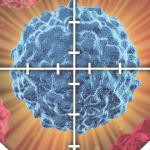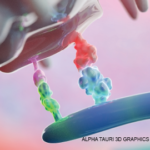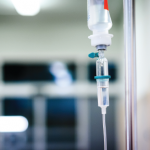Cardiotoxicity: Cardiotoxicity is a rarely reported irAE (<1%), and not well known with nivolumab. It was labeled as rhabdomyolysis during the first admission but prompt recognition is important as cardiac irAE can prove fatal. Most cases of myositis and cardiotoxicity are reported with ipilimumab or nivolumab/ipilimumab combination therapy for melanoma.
Cardiac irAEs include heart failure, cardiomyopathy, heart block, myocardial fibrosis and myocarditis. Autopsy specimens reveal an underlying lymphocytic infiltration with interstitial fibrosis, which may contribute to conduction defects.3,4,13
The etiology of ICP1-induced myocarditis has also been investigated in mice models. Deficiency of PD-1 leads to inflammation of myocytes, formation of antibodies to troponin and cardiotoxicity.14-16
Patients with preexisting cardiac conditions, such as our patient, seem to be at greater risk and need to be carefully screened prior to initiating PD-1 inhibitors. Measuring serial CK markers with each administrative dose of ICI may help monitor development of an inflammatory muscle response in its early stages and prevent further administration of the drug if toxicity is developing. Prompt recognition and steroid initiation may help avoid fatal cardiac outcomes.15
Commonly Reported irAEs: Although myositis and cardiotoxicity were not commonly reported by the drug manufacturers at the time of this patient’s presentation, knowledge of the timing of onset of other known irAEs was helpful in this case to suggest the events were drug related. Dermatologic manifestations from ICI use are the most common irAEs and usually occur in the first few weeks—as occurred in this patient, and which worsened with repetitive dosing.3 Skin toxicity varies in presentation from rash to pruritus to vitiligo. The histology differs, but this patient’s biopsy did show inflammation and perivascular infiltrates. PD-1 preserves epidermal integrity during inflammatory skin reactions, and deficiency in mice models has shown lupus-like inflammatory syndrome with proliferative glomerulonephritis and arthritis. Histology reveals cytotoxic skin eruption with accumulation of CD8 T cells at the dermo-epidermal junction. Severe toxicity, such as Steven-Johnson or toxic epidermal necrolysis, can also rarely occur.17,18
Gastrointestinal symptoms of diarrhea and enterocolitis commonly occur after ICI initiation. The patient’s liver transaminitis can be attributed to muscle damage or hepatitis. Drug-induced liver injury (DILI) has been reported as an irAE in approximately 1–5% of patients six to 12 weeks after starting ICIs. Liver biopsies show a predominant CD-8 positive inflammatory infiltrate indistinguishable from autoimmune hepatitis. Systemic and topical steroids, such as budesonide, are proposed treatments.3,19,20
The patient’s pulmonary presentation was acute and life threatening. The differential was broad, including pneumonitis, interstitial lung disease related to myositis, myasthenia-related diaphragmatic failure or upper airway obstruction secondary to mucous and edema. Pneumonitis and lung fibrosis are reported irAEs, and more likely to occur in patients with lung cancer being treated with an ICI.3,5



